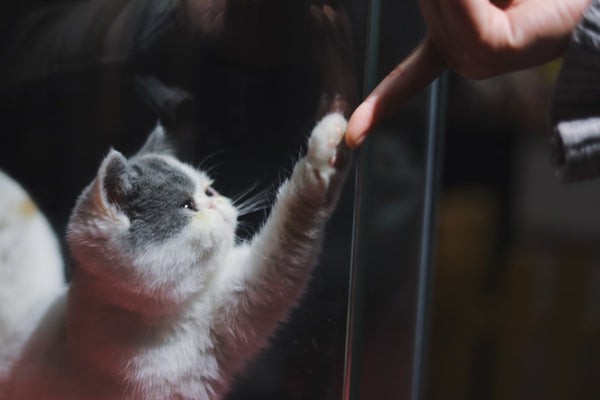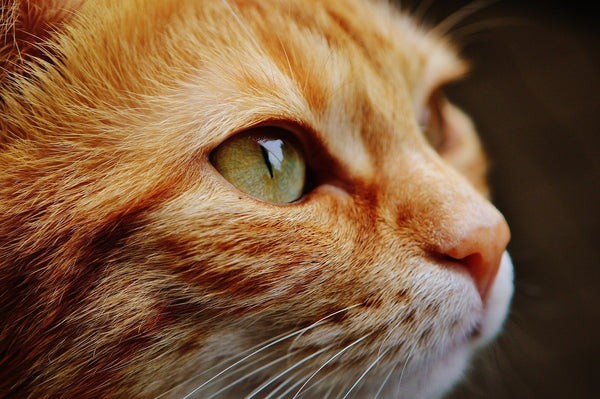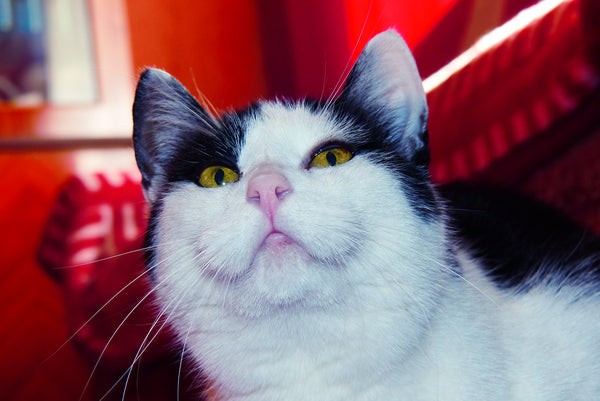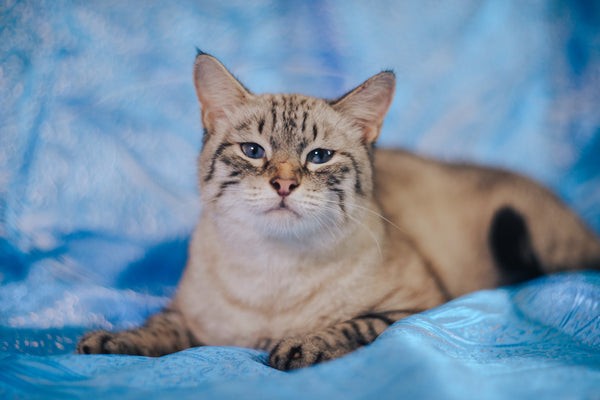Are Cats Good First Pets? Absolutely. For individuals and families venturing into pet ownership, cats can be wonderful companions. This guide, brought to you by PETS.EDU.VN, explores the numerous benefits of choosing a feline friend as your first pet, highlighting their independent nature, lower maintenance needs, and affectionate personalities. Learn why cats are excellent beginner pets and how to provide them with a happy and healthy home. Discover valuable insights into cat care, suitable breeds, and resources available at PETS.EDU.VN.
1. The Allure of Feline Companionship
Embarking on the journey of pet ownership is exciting, and choosing the right companion is crucial. Cats have long been cherished for their unique blend of independence and affection. Their playful antics, soothing purrs, and cuddly moments can bring joy and comfort to any household. But are cats good first pets? Let’s delve into why these feline friends are often an ideal choice for first-time pet owners.
- Independent Nature: Cats are known for their self-sufficiency, which makes them great for people with busy lifestyles. They are content spending time alone, engaging in activities like napping in sunny spots or grooming themselves meticulously.
- Affectionate Bonds: Despite their independent streak, cats are capable of forming deep and meaningful bonds with their human companions. They show affection through gentle headbutts, slow blinks, and curling up on your lap.
- Playful Antics: Cats are naturally curious and playful creatures. They enjoy chasing toys, batting at dangling objects, and exploring their surroundings, providing endless entertainment for their owners.
2. Low Maintenance Lifestyle
One of the primary reasons cats make excellent first pets is their relatively low maintenance requirements. Unlike some other pets, cats don’t need constant attention or extensive care routines. This makes them a practical choice for individuals and families with busy schedules or limited pet-care experience.
- Litter Box Convenience: Cats are naturally inclined to use a litter box, eliminating the need for frequent outdoor walks or potty-training sessions. This is especially convenient for apartment dwellers or those with mobility issues.
- Self-Grooming Habits: Cats are meticulous groomers, spending a significant amount of their day keeping themselves clean. This reduces the need for frequent baths or professional grooming services.
- Independent Play: While cats enjoy playing with their owners, they are also capable of entertaining themselves. They can spend hours batting at toys, chasing laser pointers, or exploring their environment.
3. The Cost-Effective Companion
Owning a pet involves financial considerations, and cats are often a more budget-friendly option compared to other animals. Their food requirements are typically less expensive, and they don’t require as many specialized accessories or grooming services.
- Affordable Food: Cats generally eat smaller portions than dogs, making their food costs more manageable. Additionally, there are many affordable and nutritious cat food options available.
- Minimal Grooming Expenses: As mentioned earlier, cats are self-groomers, reducing the need for professional grooming services. This can save you a significant amount of money over the lifespan of your feline companion.
- Fewer Specialized Accessories: While cats appreciate toys and scratching posts, they don’t require as many specialized accessories as some other pets. A simple scratching post, a few toys, and a cozy bed are often sufficient.
4. Adapting to Various Living Environments
Cats are highly adaptable creatures, capable of thriving in a variety of living environments. Whether you live in a small apartment or a sprawling house, cats can adjust to their surroundings and make themselves at home.
- Apartment-Friendly: Cats are well-suited for apartment living due to their relatively small size, quiet nature, and ability to use a litter box.
- Indoor Lifestyle: Cats are primarily indoor animals, which means they don’t require a large outdoor space to roam. This makes them ideal for people who live in urban areas or don’t have access to a yard.
- Adaptable Temperaments: While every cat is an individual, many cats are adaptable to different household environments. They can adjust to living with children, other pets, and various activity levels.
5. Health Benefits of Cat Ownership
Beyond companionship and convenience, owning a cat can also provide numerous health benefits. Studies have shown that cat owners tend to have lower blood pressure, reduced stress levels, and a decreased risk of heart disease.
- Stress Reduction: The calming presence of a cat can help reduce stress and anxiety. Petting a cat has been shown to release endorphins, which have mood-boosting effects.
- Lower Blood Pressure: Research suggests that cat owners tend to have lower blood pressure than non-pet owners. This may be due to the stress-reducing effects of cat ownership.
- Reduced Risk of Heart Disease: Studies have indicated that cat owners may have a lower risk of heart disease. This could be attributed to the lifestyle benefits of cat ownership, such as increased physical activity and social interaction.
6. Choosing the Right Cat Breed
While all cats share certain characteristics, different breeds have unique traits and temperaments. When choosing a cat as your first pet, it’s essential to consider your lifestyle and preferences to find a breed that is a good fit for you.
6.1. Popular Cat Breeds for First-Time Owners
- American Shorthair: Known for their friendly and adaptable nature, American Shorthairs are a popular choice for families with children and other pets.
- Maine Coon: Gentle giants with a playful personality, Maine Coons are affectionate and enjoy interacting with their human companions.
- Ragdoll: These laid-back and docile cats are known for their tendency to go limp when held, making them ideal for people seeking a cuddly companion.
- Siamese: Intelligent and vocal, Siamese cats are highly social and thrive on attention from their owners.
- British Shorthair: Calm and easygoing, British Shorthairs are well-suited for apartment living and adapt well to different environments.
6.2. Factors to Consider When Choosing a Breed
- Activity Level: Consider your lifestyle and how much time you have to dedicate to playing with your cat. Some breeds are more energetic than others and require more exercise.
- Grooming Needs: Some breeds have long or thick coats that require regular grooming, while others have short coats that are relatively low-maintenance.
- Temperament: Think about the type of personality you’re looking for in a cat. Some breeds are more independent, while others are more affectionate and social.
- Allergies: If you have allergies, consider a hypoallergenic breed like the Siberian or Balinese.
7. Essential Cat Care Tips
Providing proper care for your cat is crucial for their health and well-being. Here are some essential cat care tips to ensure your feline friend lives a happy and fulfilling life.
7.1. Nutrition and Feeding
- High-Quality Food: Choose a high-quality cat food that is formulated for their age, activity level, and health needs. Look for foods that are rich in protein and low in carbohydrates.
- Fresh Water: Always provide your cat with fresh, clean water. Consider using a water fountain to encourage them to drink more.
- Feeding Schedule: Establish a regular feeding schedule to help regulate your cat’s appetite and prevent overeating.
- Treats in Moderation: Offer treats in moderation, and choose healthy options like freeze-dried meat or catnip.
7.2. Litter Box Maintenance
- Placement: Place the litter box in a quiet and accessible location, away from food and water.
- Scooping: Scoop the litter box daily to remove waste and maintain cleanliness.
- Cleaning: Clean the litter box thoroughly at least once a month with soap and water.
- Litter Type: Experiment with different types of litter to find one that your cat prefers.
7.3. Grooming Practices
- Brushing: Brush your cat regularly to remove loose hair and prevent mats. The frequency of brushing will depend on their coat type.
- Nail Trimming: Trim your cat’s nails every few weeks to prevent them from becoming overgrown and causing discomfort.
- Dental Care: Brush your cat’s teeth regularly to prevent dental disease. You can also provide dental treats or chews to help keep their teeth clean.
7.4. Veterinary Care
- Regular Checkups: Schedule regular checkups with your veterinarian to ensure your cat is healthy and up-to-date on vaccinations.
- Vaccinations: Follow your veterinarian’s recommendations for vaccinations to protect your cat from common diseases.
- Parasite Prevention: Administer regular parasite prevention medication to protect your cat from fleas, ticks, and heartworms.
- Emergency Care: Know the signs of common cat illnesses and injuries, and be prepared to seek veterinary care in case of an emergency.
8. Addressing Common Concerns
Potential pet owners often have concerns about bringing a cat into their home. Let’s address some of the most common concerns and provide solutions to help you make an informed decision.
8.1. Allergies
- Hypoallergenic Breeds: Consider a hypoallergenic breed like the Siberian or Balinese, which produce less of the protein that causes allergic reactions.
- Air Purifiers: Use air purifiers with HEPA filters to remove allergens from the air.
- Regular Cleaning: Clean your home regularly to remove cat dander and hair.
- Allergy Medication: Talk to your doctor about allergy medication to help manage your symptoms.
8.2. Scratching
- Scratching Posts: Provide your cat with plenty of scratching posts to satisfy their natural scratching instinct.
- Nail Trimming: Trim your cat’s nails regularly to minimize damage from scratching.
- Protective Covers: Use protective covers on furniture to prevent scratching.
- Positive Reinforcement: Reward your cat for using the scratching post, and discourage them from scratching furniture.
8.3. Destructive Behavior
- Enrichment: Provide your cat with plenty of toys and activities to keep them entertained and prevent boredom.
- Climbing Structures: Install climbing structures or cat trees to satisfy their natural climbing instincts.
- Safe Environment: Ensure your home is safe for your cat by removing hazards like toxic plants and loose electrical cords.
- Training: Train your cat to respond to basic commands like “no” and “leave it” to discourage destructive behavior.
9. Debunking Common Myths
There are many misconceptions surrounding cats, which can deter potential owners from adopting them. Let’s debunk some of the most common myths and set the record straight.
- Myth: Cats are Aloof and Unaffectionate: While cats may be more independent than dogs, they are capable of forming deep and affectionate bonds with their owners. They show affection in different ways, such as purring, rubbing against your legs, and cuddling on your lap.
- Myth: Cats are Low-Maintenance and Don’t Need Attention: While cats are relatively low-maintenance, they still require attention, playtime, and socialization. Neglecting their needs can lead to behavioral issues and health problems.
- Myth: Cats are Nocturnal: Cats are crepuscular, meaning they are most active during dawn and dusk. While they may sleep during the day, they are often awake and playful during the evening hours.
- Myth: Cats Always Land on Their Feet: While cats have a righting reflex that helps them orient themselves in mid-air, they don’t always land on their feet. Falls from high places can still result in injuries.
10. Finding Your Feline Friend
If you’ve decided that a cat is the right pet for you, the next step is to find your feline friend. There are several options for acquiring a cat, each with its own advantages and considerations.
10.1. Adoption from Shelters and Rescues
- Saving a Life: Adopting a cat from a shelter or rescue gives a deserving animal a second chance at a loving home.
- Variety of Cats: Shelters and rescues often have a wide variety of cats available, including different breeds, ages, and personalities.
- Health Screenings: Many shelters and rescues provide health screenings and vaccinations for their cats before adoption.
- Adoption Fees: Adoption fees are typically lower than purchasing a cat from a breeder.
10.2. Purchasing from Reputable Breeders
- Specific Breeds: If you’re looking for a specific breed, purchasing from a reputable breeder may be the best option.
- Health Guarantees: Reputable breeders often provide health guarantees for their kittens, ensuring they are free from genetic diseases.
- Socialization: Reputable breeders socialize their kittens from a young age, making them well-adjusted and friendly.
- Higher Costs: Purchasing a cat from a breeder typically involves higher costs than adoption.
10.3. Considerations Before Bringing a Cat Home
- Home Preparation: Prepare your home for your new cat by providing them with a safe and comfortable environment.
- Essential Supplies: Purchase essential supplies like food, water bowls, a litter box, toys, and a scratching post.
- Veterinary Care: Schedule a checkup with your veterinarian to ensure your new cat is healthy and up-to-date on vaccinations.
- Patience and Understanding: Be patient and understanding as your new cat adjusts to their new home.
11. Expert Insights from PETS.EDU.VN
At PETS.EDU.VN, we understand the joys and challenges of pet ownership. That’s why we’re dedicated to providing you with the most up-to-date information and expert advice to help you care for your feline companion.
11.1. Exclusive Content
- Detailed Breed Guides: Explore our comprehensive breed guides to learn about the unique characteristics and care requirements of different cat breeds.
- Nutrition Tips: Discover expert tips on feeding your cat a healthy and balanced diet.
- Behavioral Advice: Get valuable insights into understanding and addressing common cat behaviors.
- Health Information: Access reliable information about common cat illnesses and how to prevent them.
11.2. Community Forum
- Connect with Other Cat Owners: Join our community forum to connect with other cat owners, share experiences, and ask questions.
- Expert Q&A Sessions: Participate in live Q&A sessions with our team of veterinary experts.
- Supportive Environment: Find a supportive environment where you can share your joys and challenges of cat ownership.
11.3. Personalized Recommendations
- Pet Matching Tool: Use our pet matching tool to find the perfect cat breed for your lifestyle and preferences.
- Product Recommendations: Get personalized product recommendations based on your cat’s needs and health conditions.
- Veterinary Directory: Find a trusted veterinarian in your area using our comprehensive veterinary directory.
12. The Joys of Cat Ownership
Bringing a cat into your home can enrich your life in countless ways. Their playful antics, soothing purrs, and affectionate companionship can bring joy, comfort, and unconditional love to your household.
- Unconditional Love: Cats offer unconditional love and acceptance, providing a sense of companionship and emotional support.
- Entertainment: Cats are naturally entertaining creatures, providing endless amusement with their playful antics and curious personalities.
- Stress Relief: Petting a cat has been shown to reduce stress and anxiety, promoting relaxation and well-being.
- Improved Health: Studies have shown that cat owners tend to have lower blood pressure, reduced stress levels, and a decreased risk of heart disease.
13. Addressing Specific Needs of Different Age Groups
Cat ownership can be rewarding for people of all ages, but it’s essential to consider the specific needs of different age groups when choosing a cat as a first pet.
13.1. Cats for Young Adults (20-35)
- Low-Maintenance Companionship: Young adults often have busy lifestyles with work, social activities, and travel. Cats offer low-maintenance companionship that fits well with their schedules.
- Apartment-Friendly Pets: Many young adults live in apartments or smaller homes, making cats an ideal choice due to their adaptability to indoor living.
- Stress Relief: Cats can provide stress relief and emotional support during the transition to adulthood.
13.2. Cats for Families with Children (30-65)
- Gentle Playmates: Certain cat breeds, like the American Shorthair and Maine Coon, are known for their gentle and playful nature, making them great companions for children.
- Teaching Responsibility: Caring for a cat can teach children responsibility, empathy, and compassion.
- Family Bonding: Cats can bring families closer together by providing a shared interest and source of entertainment.
13.3. Cats for Seniors (65+)
- Companionship: Cats can provide valuable companionship for seniors who may be living alone or have limited social interaction.
- Low-Maintenance Care: Cats require relatively low-maintenance care, making them a manageable pet for seniors with mobility issues or health concerns.
- Stress Relief: Cats can provide stress relief and emotional support for seniors, promoting relaxation and well-being.
14. The Future of Cat Care
The world of cat care is constantly evolving, with new advancements in nutrition, veterinary medicine, and behavioral understanding. At PETS.EDU.VN, we are committed to staying at the forefront of these advancements and providing you with the most up-to-date information to help you care for your feline companion.
14.1. Emerging Trends in Cat Nutrition
- Personalized Diets: The future of cat nutrition is moving towards personalized diets that are tailored to each cat’s individual needs and health conditions.
- Grain-Free and Limited-Ingredient Diets: Grain-free and limited-ingredient diets are becoming increasingly popular as owners seek to avoid potential allergens and sensitivities.
- Raw Food Diets: Raw food diets are gaining traction as owners seek to mimic the natural diet of cats.
14.2. Advances in Veterinary Medicine
- Genetic Testing: Genetic testing is becoming more accessible, allowing owners to identify potential health risks and make informed decisions about their cat’s care.
- Minimally Invasive Procedures: Minimally invasive procedures are becoming more common, reducing the recovery time and discomfort for cats undergoing surgery.
- Telemedicine: Telemedicine is expanding, allowing owners to consult with veterinarians remotely and receive expert advice from the comfort of their own homes.
14.3. Understanding Cat Behavior
- Feline Enrichment: Feline enrichment is gaining recognition as a crucial aspect of cat care, promoting mental and physical well-being through stimulating environments and activities.
- Positive Reinforcement Training: Positive reinforcement training is becoming more popular as owners seek to build stronger bonds with their cats and address behavioral issues.
- Behavioral Consultations: Behavioral consultations with certified cat behaviorists are becoming more accessible, providing owners with expert guidance on addressing complex behavioral issues.
Here’s a table summarizing the latest trends in cat care:
| Trend | Description | Benefits |
|---|---|---|
| Personalized Diets | Diets tailored to individual cat needs based on genetics, health, and lifestyle. | Improved health outcomes, better weight management, and targeted nutrition. |
| Minimally Invasive Procedures | Surgical techniques that reduce trauma, pain, and recovery time. | Faster healing, reduced risk of complications, and improved patient comfort. |
| Telemedicine | Remote veterinary consultations using technology for diagnosis, advice, and follow-ups. | Convenient access to veterinary care, especially for routine issues and follow-up appointments. |
| Feline Enrichment | Creating stimulating environments with toys, climbing structures, and interactive activities. | Reduced boredom, decreased behavioral problems, and improved mental well-being. |
| Positive Reinforcement | Training methods that reward desired behaviors to encourage learning and strengthen the bond. | Effective for teaching tricks, modifying behavior, and enhancing the cat-owner relationship. |
| Genetic Testing | Identifying genetic predispositions to certain diseases to enable early intervention and care. | Proactive health management, early disease detection, and informed breeding decisions. |






15. Are Cats Good First Pets? The Verdict
So, are cats good first pets? The answer is a resounding yes. Their independent nature, low maintenance needs, adaptability, and affectionate personalities make them an ideal choice for individuals and families venturing into pet ownership. By providing them with proper care, a stimulating environment, and plenty of love, you can enjoy a lifetime of companionship with your feline friend.
Remember, PETS.EDU.VN is your trusted resource for all things cat-related. Visit our website at PETS.EDU.VN or contact us at 789 Paw Lane, Petville, CA 91234, United States, or Whatsapp: +1 555-987-6543 for more information and expert advice.
Still unsure? Let’s explore some frequently asked questions to address any lingering concerns.
16. Frequently Asked Questions (FAQ)
16.1. Are cats easy to take care of for first-time owners?
Yes, cats are generally easy to care for, especially for first-time owners. Their self-sufficient nature and low maintenance requirements make them a manageable pet for busy individuals and families.
16.2. What are the basic needs of a cat?
The basic needs of a cat include high-quality food, fresh water, a clean litter box, regular grooming, veterinary care, and plenty of love and attention.
16.3. How do I choose the right cat for my family?
Consider your lifestyle, preferences, and any allergies when choosing a cat. Research different breeds and visit local shelters or rescues to meet potential feline companions.
16.4. How can I prevent my cat from scratching furniture?
Provide your cat with plenty of scratching posts, trim their nails regularly, and use protective covers on furniture. You can also reward your cat for using the scratching post.
16.5. What are some common health problems in cats?
Some common health problems in cats include urinary tract infections, kidney disease, dental disease, and obesity. Regular veterinary checkups can help prevent and manage these issues.
16.6. How much does it cost to own a cat?
The cost of owning a cat varies depending on factors like food, litter, veterinary care, and accessories. On average, you can expect to spend several hundred dollars per year on cat care.
16.7. Are cats good with children?
Many cats are good with children, especially those who have been socialized from a young age. Teach children how to handle cats gently and respectfully.
16.8. How long do cats live?
The average lifespan of a cat is 12-15 years, but some cats can live much longer with proper care.
16.9. What are the benefits of adopting a cat from a shelter?
Adopting a cat from a shelter saves a life, supports your local community, and often comes with health screenings and vaccinations.
16.10. Where can I find more information about cat care?
Visit PETS.EDU.VN for comprehensive information about cat care, including breed guides, nutrition tips, behavioral advice, and health information. You can also contact us at 789 Paw Lane, Petville, CA 91234, United States, or Whatsapp: +1 555-987-6543.
Ready to start your journey as a cat owner? pets.edu.vn offers a wealth of resources to help you every step of the way. From choosing the right breed to providing expert care, we’re here to support you and your feline friend. Explore our website today to unlock a world of knowledge and discover the joys of cat ownership. Your purrfect companion awaits.